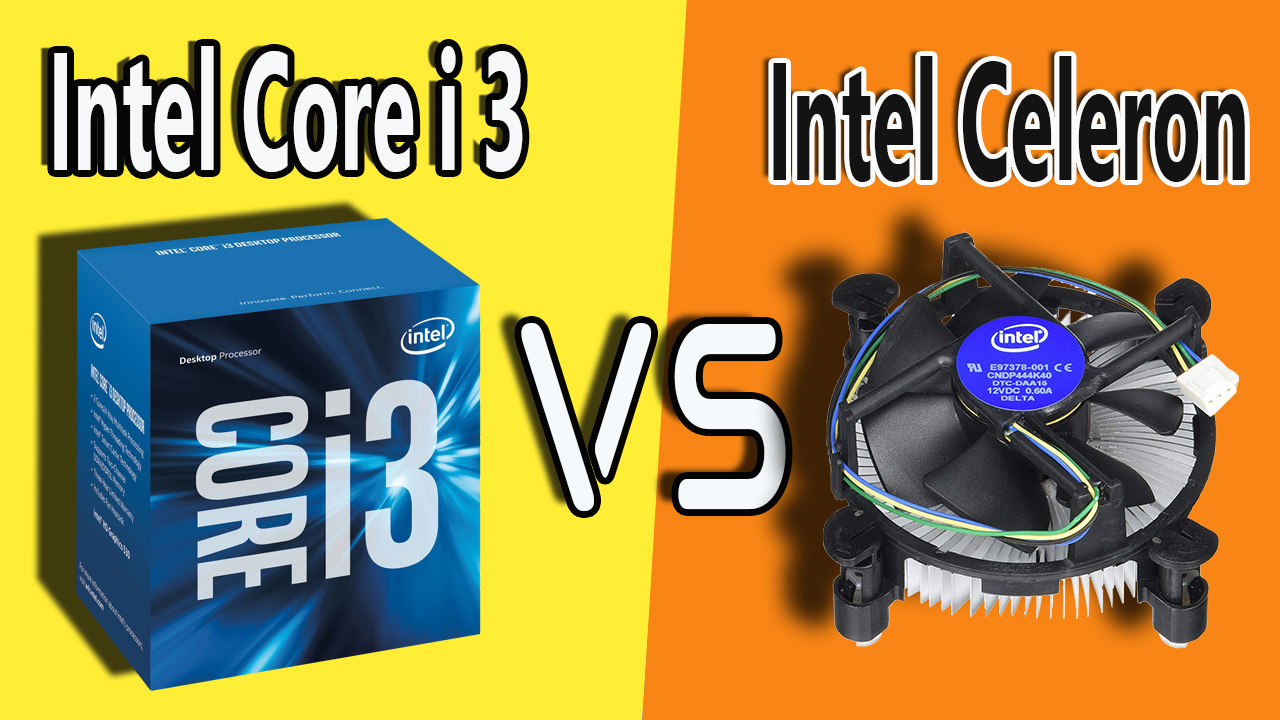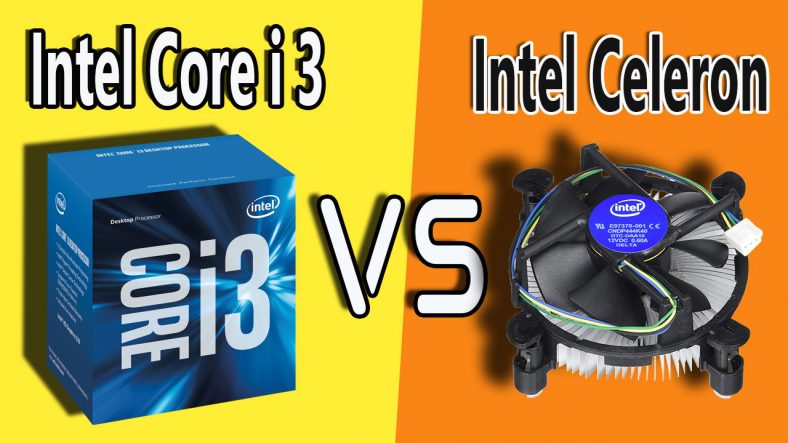Intel Core i3 vs Intel Celeron – What’s The Difference?
Choosing the right CPU (or processor) for your desktop computer can be quite complicated today. This is usually because both, Intel and AMD, have a massive lineup of processors that often intertwine with each other when it comes to their pricing, which makes it even more confusing to people who are new to computer building.

We have often compared two top-tier processors like the Intel Core i7 series with the AMD Ryzen Zen2 series in order to give people a clear idea of what they should be looking for. However, we have been getting far too many questions about lower-end CPUs (Central Processing Units) and it seems that an explanation is due. Intel Core i3 is the lowest-grade CPU in the Intel Core series while the Intel Celeron itself – though not being in any particular lineup – is considered extremely low-end.
However, it seems that there still are confusion as to which one is more powerful and what is the best usage scenario for each of the two CPUs in question. So, let’s dive a little bit deeper and clear the confusion behind the Intel Core i3 and Intel Celeron.
Core and Thread Count
To evaluate any processor today, you must know the number of cores and executable threads of the processor. There was a time when a processor used to be a single unit. However, since fabrication technology has gotten enhanced, it allows even smaller electronic components to be built and embedded with each other. This advancement opened the gates for true multi-core CPUs that are extremely powerful parallel taskers. In today’s market, finding a single core CPU is almost impossible for us.
Now, what is the “number of threads”? Intel and AMD both have developed seamless technologies that allow a single core to switch between two processes extremely quickly. Using these technologies, CPU manufacturers sometimes design the processor such that each core can run two threads (a set of instructions) at a time, achieving virtual threading which is called “hyperthreading”. The general rule of thumb here is that the higher the number of threads, the better the performance.
So, an Intel Celeron CPU usually has 2 cores and no hyperthreading, which makes it a 2-thread CPU. An Intel Core i3 usually has 4 cores and 4 threads. There are a few Core i3 CPUs that have 2 cores but those CPUs can run 4 threads at a time thanks to hyperthreading. To put it very clearly, an Intel i3 processor is much more powerful than an Intel Celeron.
Cache Size and Frequency
Multitasking processors need a small cache memory to store the data of the previous task they were running in order to start working on a new task. The bigger this cache memory, the better your processor can perform because then it won’t have to pull the new data from the main memory (RAM). Getting data from the cache is way faster than getting the same data from the RAM.
An Intel Core i3 will usually have 6-8 MB of cache while most Intel Celeron CPUs come with 4 MB of cache. Again, this means that a Core i3 is better at multitasking than the Celeron.
The frequency of a processor defines the number of instructions that the processor can compute in one second. The higher the frequency, the more instructions are computed per second. Intel Celeron CPUs usually have a frequency of about 2.00 GHz which burst to 2.70 GHz max. An Intel Core i3 usually has a frequency of 3.20 GHz which can automatically overclock to 3.80 GHz. You must be starting to see a pattern here: The Core i3 simply is intended to be more powerful and faster than an Intel Celeron CPU.
The Verdict
There are countless other things including integrated graphic support, bus speeds, memory support, and many more that the Core i3 can do better than an Intel Celeron. The only question that needs to be answered is, do you need an Intel Celeron or an Intel Core i3?
To answer this, you will have to consider the tasks you will be performing on the computer. An Intel Celeron is great for light word processing, playing casual games (like some arcade games that aren’t too performance intensive), playing movies in high quality, listening to music, browsing the web, emailing, and other such stuff.
An Intel Core i3, on the other hand, can do an even larger variety of tasks when compared to the Intel Celeron. You can start playing AAA gaming titles on low graphics settings, you can easily run image-processing software like Adobe Photoshop and Illustrator, you can do a lot of development and designing work and much more. So, it all boils down to what are you going to do on your computer? If you don’t need an Intel Core i3, you can save a lot of money by opting for a system that is powered by an Intel Celeron.
